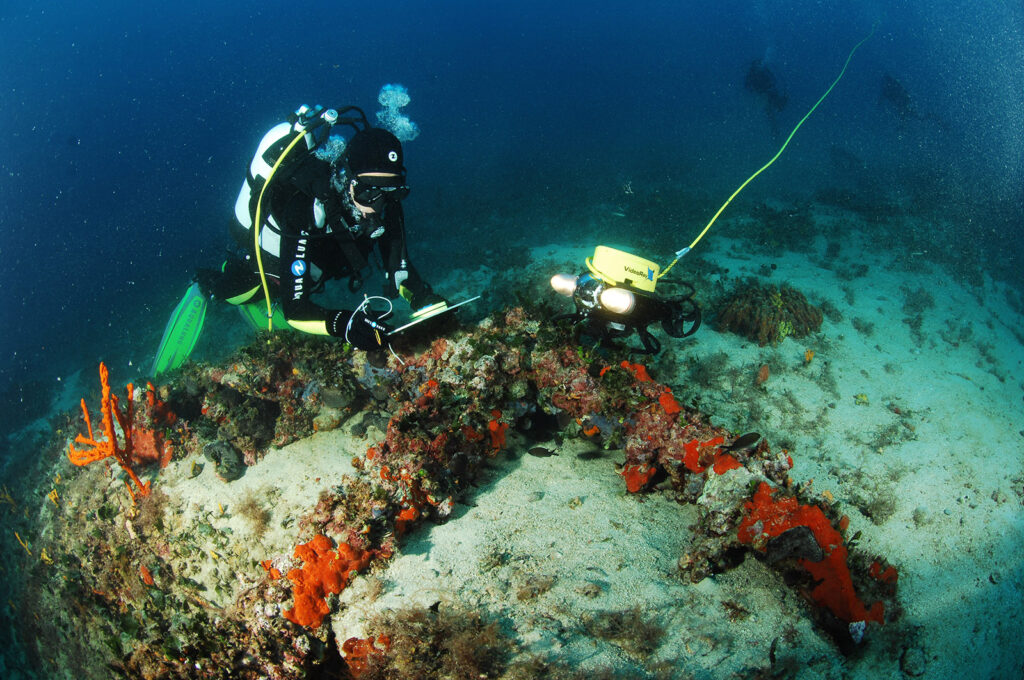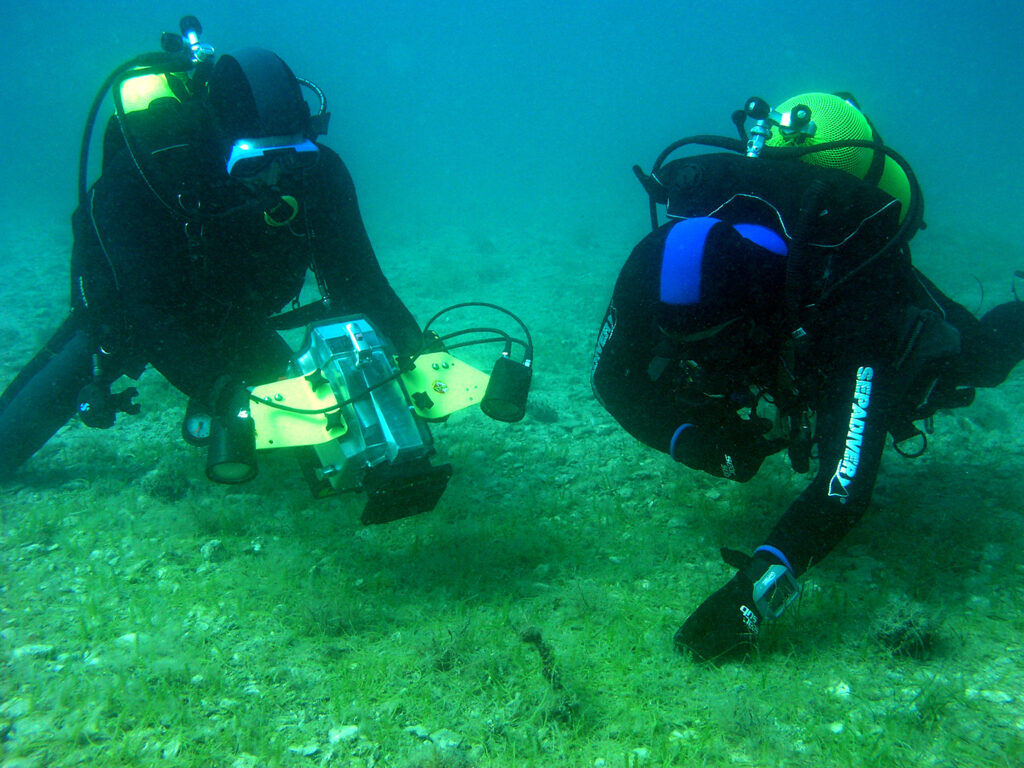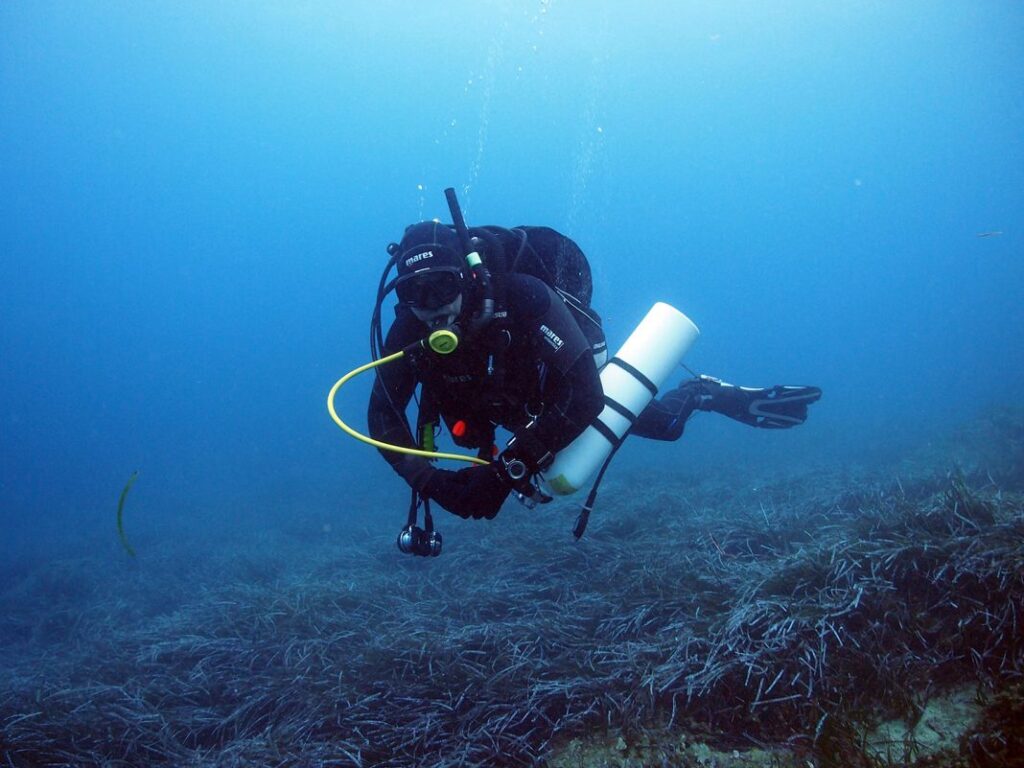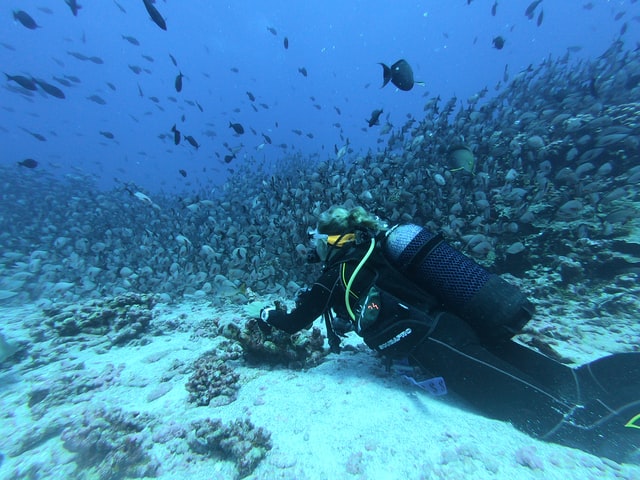Scientific diving is unfamiliar to a huge section of the diving community. Even those who have heard of it are often confused about what it entails. Far less is understood about how recreational diving (as the most popular type of diving) exists mostly as a result of the technological accomplishments of scientists who have refined diving. Making it accessible and easy for the general public.
From the first mention of diving, which in its beginnings was tied exclusively to commercial and military purposes, many scientists have worked on its refinement. For example, the great Greek philosopher Aristotle originally proposed the use of a diving bell. And legend has it that his contemporary Alexander the Great was among the first to stay inside.
Science and research diving
In recent decades, the scuba diving community has faced numerous challenges across the globe. Some people think that scientific divers should follow the regulations that apply to commercial diving. Given that they are diving in the workplace and often from employees who are paid for their work. Some individuals believe that scientific divers are the same as sports divers and that no further training is required. Scientific diving, on the other hand, differs from commercial and recreational diving for the following reasons:
- The purpose of a project that uses scientific diving is to advance science
- Scientific divers, based on the nature of their activities, must use scientific expertise and receive appropriate scientific training to safely and effectively study the underwater environment
- The jobs of a scientific diver are those of an observer and a data collector. Construction and work-related tasks traditionally associated with commercial diving are not included in scientific diving
- Each organization must have a Diving Supervisory Board, consisting of the most active scientific divers, who independently and absolutely manages all aspects of diving operations and a Dive Safety Manual that contains procedures covering all aspects of diving operations.
The international scientific diving community has the lowest accident rate of all diving sectors. The standards for these divers are proven to be safe and allow them to continue studying the environment. There is no need for one standard or regulation to cover all diving activities. It is possible to have different sets of standards (for commercial, scientific, and sport diving), to ensure the safety and efficiency of these divers.
Great diving inventions
Twenty centuries later, Edmund Haley, well known for discovering the comet of the same name, improved the bell by building a fully working wooden diving bell that received air from the surface, which the scientist himself tested by staying in it for almost an hour at a depth of 16 meters. Before him, the versatile genius Leonardo da Vinci developed the first diving fins, and even today, in his museum, you can see a model of a diving mask and a gadget he built with the goal of allowing a man to stay below the surface for an extended period of time.
Because of the frequent engagement of scientists, the word scientific is applied to a wide range of dives that enhance technique or accompanying equipment. However, only dives taken as part of scientific, research, or educational activities are considered true scientific diving.
Scientific diving differs from recreational and other commercial diving in a variety of different ways. Enjoying weightlessness, swimming beneath the surface, breathing with autonomous equipment, and watching the underwater world is what a recreational diver aspires for and what makes a dive truly enjoyable. In contrast, for a scientist, scuba diving is just a method for exploring the world below the surface. As a result, the purpose of any scientific dive is to progress research. Therefore it is clear that such diving can only be conducted by scientists whose primary duty is to observe and gather the data required for science.
Today’s marine research, which includes diving, may be reduced down to archaeological and biological-biotechnological studies.
Archaeological dives

Archaeological diving is a relatively new archaeological practice. When archeological diving is mentioned, many people immediately think of researching a shipwreck. But this isn’t the only thing that’s going on here. Because archeology, like other areas of research, has centered on the study of previous big earthquakes, increasing sea levels, climate change, and other important changes. As a result of these changes, a lot of stuff is now buried down in the ocean. To be sure, the general public and the scientific community sometimes overlook the significance of the research. Roman amphorae and ship compasses from sunken destroyers will always be more fascinating to recreational divers than sunken-built structures that may provide scientists with a completely new picture of the previous existence of some lost human civilization.
Biotechnological scientific diving
Biotechnological scientific diving most commonly refers to a study involving fishing equipment or other human-made instruments and technologies that operate underwater and have an impact on marine ecology. Given the vast fishing industry, it is well recognized that fishing instruments have a significant influence on the marine environment and creatures. As a result, divers strive to establish the level and manner of their activity as precisely as possible. The great possibility of using diving for such research stems from the fact that most fishing gear works in a shallow area suitable for the use of conventional diving techniques. Recently, a large amount of research has been devoted to the impact of trawl fishing gear. So divers are often used to take samples and assess the condition of the seabed before and after passing fishing gear.
Another aspect of fishing gear research is to examine its features. Although the features of the instruments are frequently evaluated in specially created pools, as is the case with models. The study of tools at their full size and in their natural surroundings yields far more accurate and precise results.
Diving for the purpose of biological research

Biological research deals with the study of the biology and ecology of marine organisms. The behavior of fish and other marine organisms is a whole scientific discipline, so divers are very often involved in research. There is no universal diving technique for such research because the most suitable technique is applied to every organism and habitat, from the tropics to the polar regions. It is similar to mapping underwater areas where, depending on the type of habitat and depth, there are different methods.
Safety procedures for scientific diving
A special part of every scientific dive is the safety procedures that accompany each particular dive. Scientific diving entails regularly monitoring the most recent diving information, which is promptly incorporated into diving protocols. For example, divers from the Department of Marine Studies used deep decompression stops many years ago when diving to depths of about seventy meters. Although deep stops were mentioned by Haldane, basing the theory of surfacing on stops before a double change of pressure. This is a relatively new diving technique that is not yet known to the general public. Although already a good part of the algorithms used in diving computers of different manufacturers involves the use of deep stops.

Furthermore, participating in the research of the Faculty of Medicine related to diving medicine, new insights were gained. Therefore, today nitrox 50 is used in the underwater census of vertical reefs with deep decompression stops. The underwater census of vertical reefs is a method based on reef research that was initially employed in the Adriatic Sea. Often referred to as “walls.” Up to 50 meters depth, which is the final limit that permits diving legislation and scientific sample techniques to be harmonized. As the reason for using nitrox 50 is a completely new and broad topic, let’s just say that divers use Nitrox 50 from 18 meters deep to the surface. Which corresponds to an initial partial pressure of oxygen in a mixture of 1.4 bar.
Finally, let us say that the importance of scientific diving today is not only in the advancement of science but also in the constant research of new techniques and equipment that enable new scientific knowledge. But at the same time, they find their application in a wide diving population.
Thank you for reading. Check out how to increase your income with scuba diving here.

Pingback: Increase your monthly income with scuba diving - Scuba Diving Corner
Pingback: Best way to increase your income with scuba diving - Scuba Diving Corner
Pingback: "Deep Diving: A Challenge and a Lifestyle" - Scuba Diving Corner